This article was published in Scientific American’s former blog network and reflects the views of the author, not necessarily those of Scientific American
Why animals occur where they do remains, and always has been, one of the great questions of evolutionary biology. Two main competing ideas have been put forward as explanations for animal distribution. Maybe, just maybe, animals have spread around the world themselves, using temporary land-bridges, making sea crossings, jumping really far, floating hither and yon on bundles of reeds, hitch-hiking… that sort of thing.
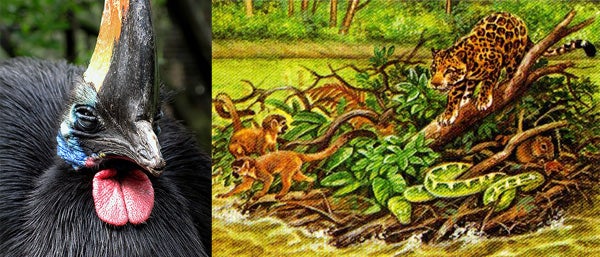
Science: how do you explain this? Cassowary photo by Damien du Toit (CC BY 2.0). Rafting animals from Mitchell Beazley's The Joy of Knowledge, 1987 [I've been unable to source the name of the artist].
Maybe, alternatively, they moved with the continents, a hypothesis of course contingent on the idea that the continents do indeed move across the surface of our planet.
On supporting science journalism
If you're enjoying this article, consider supporting our award-winning journalism by subscribing. By purchasing a subscription you are helping to ensure the future of impactful stories about the discoveries and ideas shaping our world today.
In recent years, and following lengthy decades of internecine combat, strife, civil unrest, it has mostly been agreed that both of these ideas might be applicable, with perhaps both explanations being combined in cases. In short, a terribly messy view has emerged, biologists picking and choosing a favoured notion like so many croutons and sweetcorn pieces from a Pizza Hut salad bar (Anderson 1973, Amico & Aizen 2000, McKenna & Lillegraven 2006).
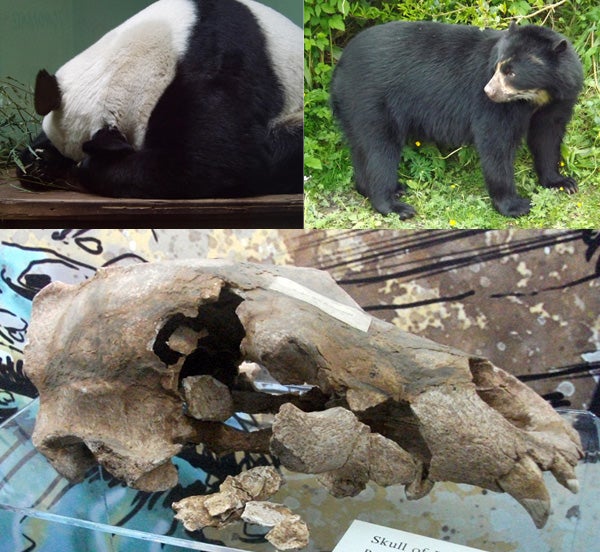
BEARS. Let's see where this goes. Photos by Darren Naish.
Maybe, just maybe, this pendulum of compromise has swung too far. Maybe we need less shades of grey and more black and white. A simpler, more hardline view of how things might be.
Look at bears. Why, there are bear in Eurasia, North and South America, and (until recently) there were bears in Africa (Milne 1926). I believe there are bears in Australia too, but I haven’t checked thoroughly (Milne 1926). And I’m sure Antarctica once had bears as well – future finds will confirm this (Milne 1926). How could bears become so widespread? Can they swim? I think not (Milne 1926).
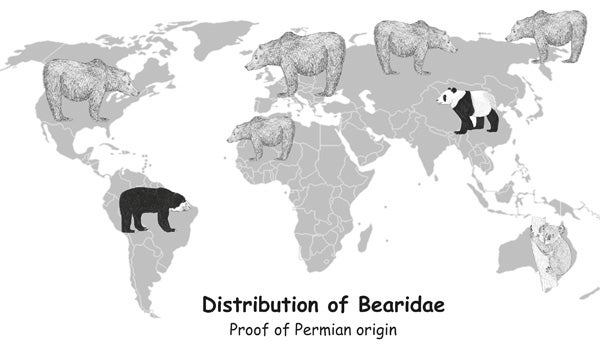
The simplest explanation is self-evidently not that bears have played intercontinental hop-scotch across the oceanic shelf, that they’ve made daring leaps from Alaska to Siberia, or that they once swam the Bering Sea, the Strait of Gibraltar, the Persian Gulf or even, heavens to Betsy!, the English Channel. No, it is far more parsimonious to posit a dispersal event of bears that occurred back when the continents were snuggled together in convenient, homely fashion. The Permian. There must have been bears in the Permian.
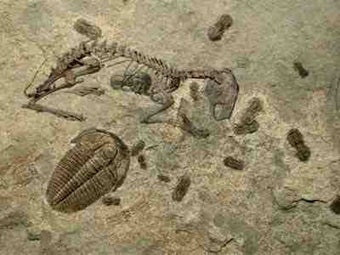
Cambrian rabbits - what more proof do you need? From Splenebyrst (2007).
The fact that bears must have existed in the Permian leads to several interesting ramifications. Bears are dog-branch carnivorans, so all those carnivoran groups that diverged prior to the origin of bears must also have been in existence during – or prior to – the Permian. And carnivorans are eutherian mammals, so eutherians, and mammals as a whole, must have originated prior to the time that bears evolved and spread, probably during the Carboniferous. If we look at the place of carnivorans in mammal phylogeny, we see that they’re one of the youngest clades within the whole group: xenarthrans, afrotheres, primates, rodents, lagomorphs, bats, pangolins and both odd-toed and even-toed hoofed mammals all diverged prior to the origin of Carnivora, and thus also originated in or prior to the Permian as well. Could there, indeed, have been rabbits in the Cambrian? Well, maybe (Haldane 1960, Splenebyrst 2007).
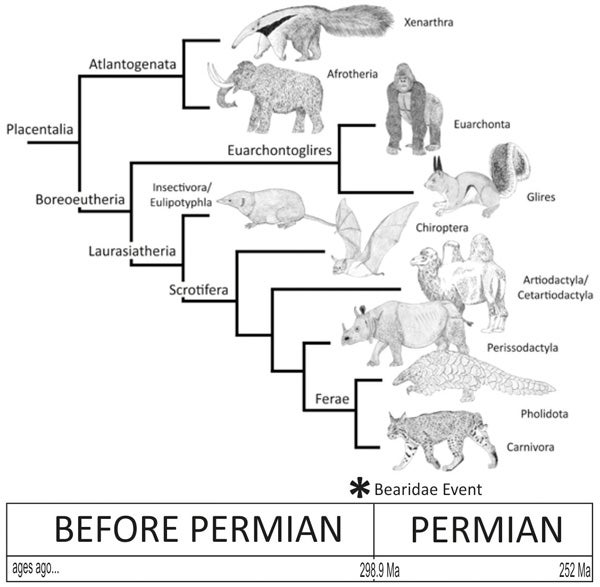
A Permian Bearidae biogeographic event puts so many events in placental mammal evolution prior to the Permian. In the Cambrian maybe? Yeah, sure, why not?
What about those fossil animals posited as the potential ancestors of carnivorans, of placentals, or of mammals, and yet are nowhere near as old as they need to be in order to match with a Permian origin of Bearidae? (I think that’s the right name for bears). Living fossils. Anachronisms. All of them. Fossils are irrelevant. PERMIAN BEARS. PERMIAN. BEARS.
Refs - -
Anderson, E. 1973. Ferret from the Pleistocene of central Alaska. Journal of Mammalogy 54, 778-779.
Amico, G. & Aizen, M. A. 2000. Mistletoe seed dispersal by a marsupial. Nature 408, 929-930.
Croizhat, L. 1951. Why Bears in the Permian? Because Panbiogeography. Privately Published.
Haldane, J. B. S. 1960. On a leporid of Cambrian age… or it might be Precambrian, the exact details of what I said are a bit sketchy. Famous Musings and Other Things to Quote 45, 34-39.
McKenna, M. C . & Lillegraven, J. A. 2006. Biostratigraphic deception by the Devil, salting fossil kollinbrains into the Poobahcene section of central Myroaming. Palaeontographica Abteilung A 277, 1-17.
Milne, A. A. 1926. Winnie-the-Pooh. Methuen & Co, London.
Splenebyrst, W. 2007. Paleohyrax reprobate, a rabbit from the Burgess Shale, preserved on top of a trilobite in a Cambrian tidal pool or something. Nature 444, 889-893.